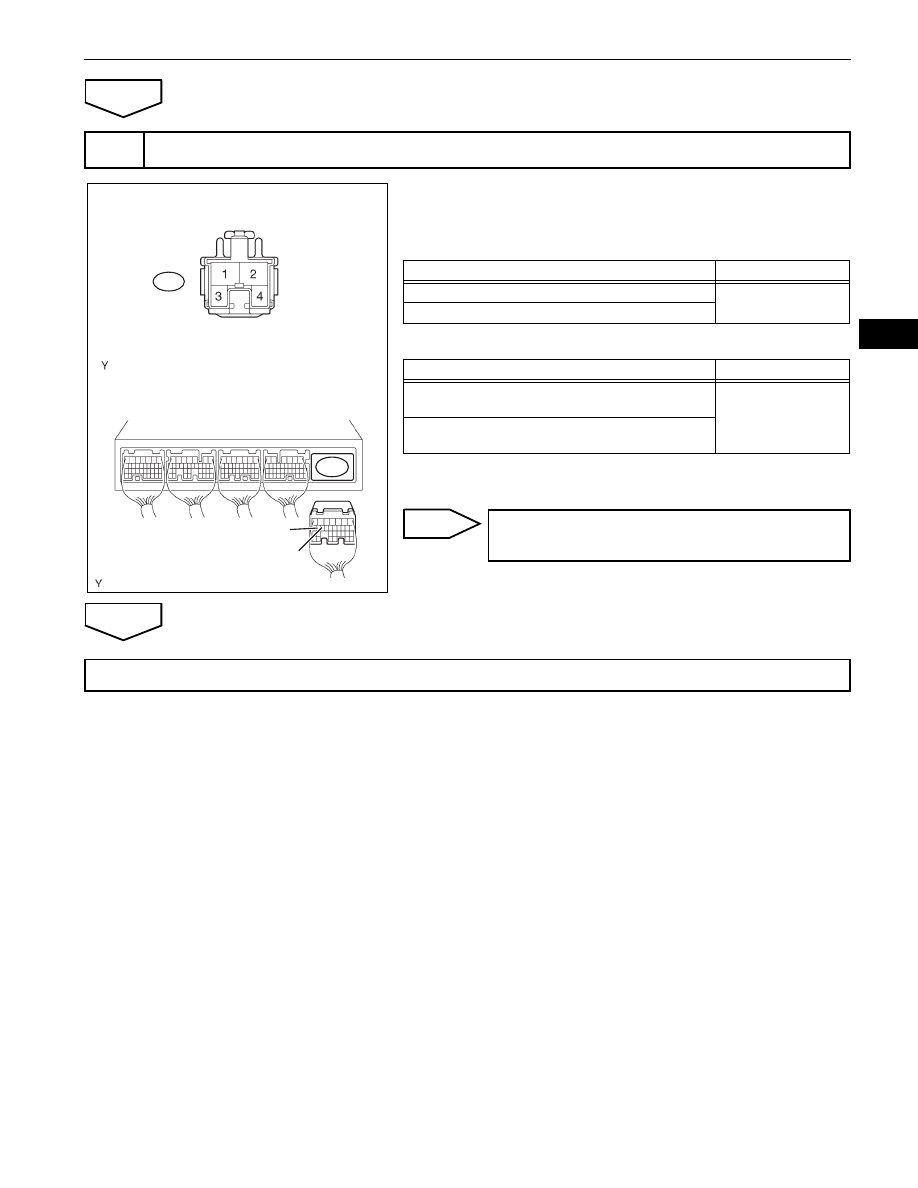Toyota FJ Cruiser (GSJ 10, 15 series). Instruction - part 75

1GR-FE ENGINE CONTROL SYSTEM – SFI SYSTEM
ES–255
ES
NG
(a) Disconnect the A3 stop light switch connector.
(b) Disconnect the E47 ECM connector.
(c) Check the resistance.
Standard Resistance (Check for open)
Standard Resistance (Check for short)
(d) Reconnect the stop light switch connector.
(e) Reconnect the ECM connector.
NG
OK
4
CHECK HARNESS AND CONNECTOR (STOP LIGHT SWITCH - ECM)
A3
Front View
ECM Connector
Wire Harness Side:
Stop Light Switch Connector
E47
ST1-
STP
A116299E03
Tester Connections
Specified Conditions
Stop light switch (A3-1) - STP (E47-15)
Below 1
Ω
Stop light switch (A3-4) - ST1- (E47-16)
Tester Connections
Specified Conditions
Stop light switch (A3-1) or STP (E47-15) - Body
ground
10 k
Ω or higher
Stop light switch (A3-4) or ST1- (E47-16) - Body
ground
REPAIR OR REPLACE HARNESS OR
CONNECTOR
REPLACE ECM (See page
)